How СOVID-19 Impacts Fitness Industry Transformation
Published: February 29, 2024
13 min read
In this article, you'll learn:
1
😷 COVID-19 and Trends in the Fitness Industry
2
📹 Fitness Industry Transformation: Virtual Content
3
📱 How to Incorporate Virtual & Online Content in your Fitness Business?
4
🏪 Coronavirus & New Offline Experience: Reopen and Adjust to the New Reality Right
5
🤖 How to Streamline Your In-Studio Processes with Digital Technologies
6
💡 Takeaways
Fitness is definitely one of the industries affected the most by the COVID-19 pandemic. The lockdown pushed digital transformation in the fitness industry since it was the only way to stay connected with customers.
Yet, while restaurants were able to relatively fast & easy switch to digitally-powered services like delivery, gyms and fitness/yoga studios faced way more challenges.
In this article, we won’t feed you with well-known facts on the changes in the fitness industry that you know better than us. Instead, we’d like to focus on challenges and trends affecting the fitness industry. Also, we’ll provide you with hints on how digital technologies can help your fitness business adjust to the new reality.
But let’s start by taking a look at where we are at the moment.
😷 COVID-19 and Trends in the Fitness Industry
From the fitness perspective, the Coronavirus pandemic and following lockdown created 2 big tendencies, moving in different directions:
- On the one hand, members got cut off from their gyms, yoga and fitness studios. It obviously led to the dramatic decline of cashflow within the industry.
- On the other hand, the number of people interested in fitness has noticeably grown. At-home fitness and yoga workouts became a way to get some relief, avoid stress, and spend free time on lockdown for many people.

COVID-19 didn't stop people from training. Actually, it encouraged them to work out even more (image by ranganath krishnamani)
Moreover, these trends emerged everywhere and for everyone — from the USA to Italy, to Japan; from big chains like 24 Hour Fitness to small family yoga studios.
Jane Bahneman, the AFS Community Expert, accurately describes the situation as:
We are all in the same storm, we all just are in very different boats.
Digital technologies — we’re mostly talking about websites and mobile apps — can help to build a new, digitally-driven strategy for your business and help you to adjust to the post-COVID reality.
We’ve also asked Josh Leve, the Founder & CEO of the Association of Fitness Studios (AFS), for his opinion on what fitness studio owners can do from a technological standpoint:
Right now from a technological standpoint, what members want in their new normal is not going to be about the best workout, the most equipment or the most classes, it will be about whether or not I trust my health to you and your team. How a studio showcases that plays out on multiple channels but mainly social media and the web. The issue is, for those who've reopened, that if you don't open, and the studio across the street or down the block does, you risk your clients or members going to that business and not yours. There's without a doubt a certain percentage of people who are dying to get back to their studio, so it's a tough call if the business is not ready...but they should be. Because of these factors now is the time for fitness businesses to look to revamp everything they were doing pre-pandemic — which includes how a potential client might find you and what their perceived value is of your services. |
Let’s take a closer look at a few key newest trends in the fitness industry!
📹 Fitness Industry Transformation: Virtual Content
One of the most obvious fitness industry trends everyone could witness is the rapid rise of virtual fitness content. You can clearly see it on the Google Trends chart below:
During March-April 2020, the most strict months of lockdown, the worldwide searches for the “Fitness App” topic reached the highest point ever.
What’s happened? It’s quite clear: people started to look for alternative ways to workout at home. Businesses that already offered their customers virtual content got an obvious advantage. This also includes companies that specialize in corporate fitness app development.
Moreover, they were able to put it in many different forms:
- Online pre-recorded workouts 🎥
You may think of this as Netflix for the fitness industry. It’ll require creating a library of pre-recorded workouts, that can be easily filtered by type, duration, needed equipment, intensity, etc.
- Live streaming classes 📹
During the lockdown, live classes became a popular practice for many fitness and yoga studios. Firstly, it didn’t take much to setup: you could start by simply using Zoom or Skype group calls. Secondly, you could still provide a “human touch” to your customers which makes it quite different from pre-recorded online workouts.

Live Workouts app example (image by Cleveroad)
- Audio Coaching 🎧
This approach is especially popular in running apps like Nike Run Club. You can implement audio coaching to motivate your listeners, guide them from exercise to exercise and give some technique tips, or both.
- List of exercises 📋
Finally, businesses could just provide their members with written lists of home exercises to guide them during workouts. Some applications (like 24GO app) could automatically make up a list of exercises based on the user’s goals and physical assessment.
Josh Leve from the AFS agrees with the idea of the rising popularity of online content and challenges about it:
Additionally, now more than ever, studios have adapted online/virtual training into their packages. What this means is before when these businesses were looking to generate new revenue, they had to do so by getting more people to "walk through their doors" - now the opportunities are endless. A person who would never want to step foot into a studio or gym can now become part of your culture, can join your studio but train remotely. This opens up massive potential because you can cast a significantly wider net to attract a target audience to train online and never set foot in your physical, brick and mortar space. Studios and gyms have not focused much on spending any more money. They are concerned with generating enough revenue to stay open and pivoting to online/outdoor workouts, along with a hybrid model. Typically the work necessary to complete these tasks, coupled by the cost incurred will keep many on the sidelines and focused on making ends meet with so much uncertainty in the future. |
The same trend can be proven by data gathered at Mindbody.
Before the pandemic, virtual workouts and online classes were more of a fancy feature for digitally savvy users. The situation has predictably changed during and after the lockdown — a great example of how the fitness industry is changing for digital.
According to Mindbody, the number of customers who access virtual content and online courses has significantly grown:
- 73% of their customers were using pre-recorded video workouts in spring 2020 compared to only 17% in 2019;
- the growth even bigger for live weekly online classes: 7% in 2019 evolved into 85% in spring 2020.
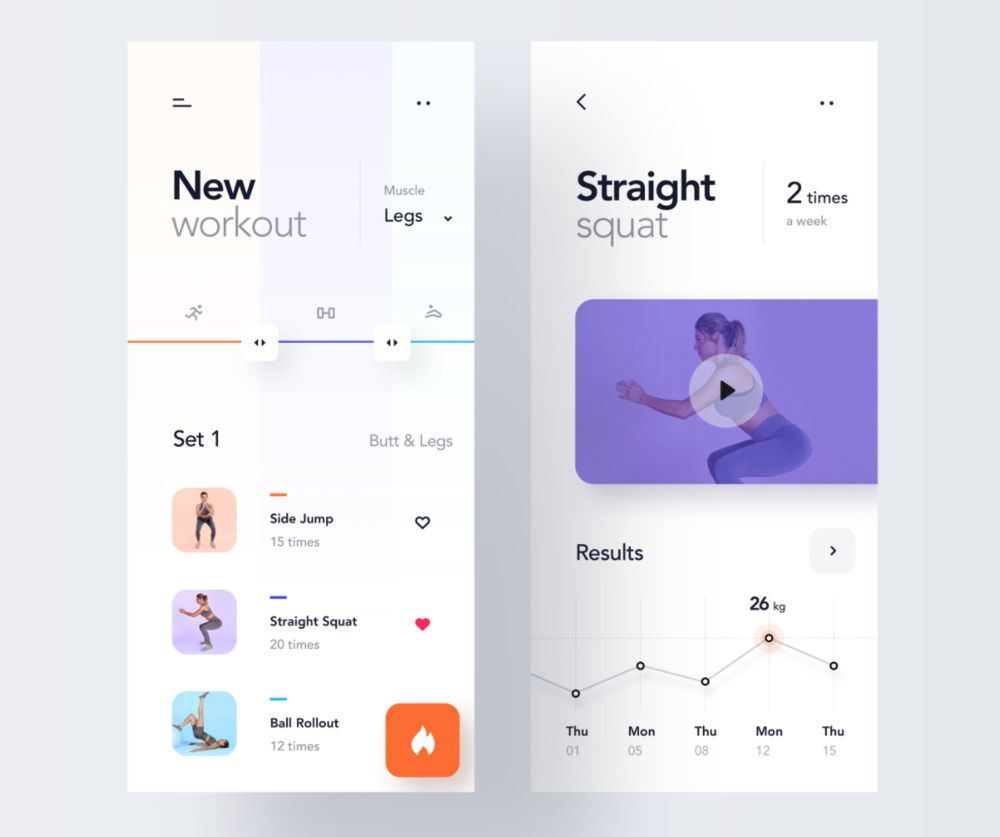
Applications for home yoga and workouts are extremely popular these days (image by Den Klenkov)
Moreover, the possibility to work out or do yoga at home increased the amount of time people are ready to dedicate to fitness. More particularly, 56% of people questioned by Mindbody claimed to exercise at least 5 times a week. Amaya Weddle, the Vice President of Research and Product Marketing at Mindbody, has quite a convincing explanation for that:
“Consumers are able to just show up and have that experience in the comfort of their home. Many are reporting how great it is because it doesn’t involve a commute, so they're finding that they’re able to squeeze in those workouts between, maybe when work ends and when they have family responsibilities, in ways that they couldn’t before.”
Finally, it may seem that online classes are just a temporary measure that won’t be popular when things get back to normal. First, no one is sure when things will get back to normal. Second, surveys show that virtual & online content is one of the technology trends in the fitness industry that’s going to stay with us:
- 46% of сonsumers surveyed by Mindbody said they will leave online classes a regular part of their fitness routine even after studios reopen;
- at the same time, 40% of customers are booking workouts from studios they’ve never visited before, proving that virtual content is good for both attracting new clients and reaching “digital-first” clients before competitors.
Let’s see how you can build your own virtual content strategy for your business!
📱 How to Incorporate Virtual & Online Content in your Fitness Business?
There’s no other way to turn this trend into your advantage than by developing your own online content strategy. If we try to break it down into step-by-step instruction, it will look as follows:
-
Evaluate your assets. Assess available resources that you’ll be to allocate to the development of your virtual content: money, time, free coaches to record workouts, equipment, etc.
-
Decide on the type of content. According to available resources, what content would you like and be able to provide to your customers? In general, there are 4 main types of online fitness content but you may come up with your own format as well:
- Online pre-recorded workouts.
- Live streaming classes.
- Audio coaching.
- Text list of exercises.
-
Pick a platform. Again, this will mainly depend on available resources, in the first place — money. The best options from the user experience and customer satisfaction perspectives are your own branded website and/or mobile application. Yet, you may start by using what’s available to your right now: for example, live classes via Zoom or Skype, or distribution of pre-recorded workouts in a WhatsApp group chat.
-
Find contractors. The next step is to fill the missing links in the contractor chain. Think of anyone whose services you’ll need: from a mobile/web development agency to a video crew.
-
Do it! Now you have a vision of your content, a platform to distribute it and a team to make all this magic work. So keep the ball rolling!
Yet, online content won’t fully replace good old offline workouts at gyms and yoga studios. Let’s take a look at how Coronavirus is changing the fitness industry in terms of members’ offline experience and what digital technologies have got to do with it!
🏪 Coronavirus & New Offline Experience: Reopen and Adjust to the New Reality Right
It’s been said a lot about the rising popularity of online and virtual content. Yet, it’s not going to kill the traditional visits to gyms and fitness studios. According to L.E.K., customers are not ready to replace the physical experience with online workouts:

Source: L.E.K. Digital Health and Fitness Consumer Survey (November ’18) (image by L.E.K.)
As you can see, 90% of digital fitness subscribers say they’re as likely as before or even more likely to use a traditional gym after their experience with online workouts. Thus, it means that a big deal of your online-first users can be converted to offline members, and not only vice versa.
However, the new in-studio reality is influenced by both government guidelines and the risen expectations of your customers. This not only directly affects the speed of re-opening but also introduces a broad variety of new safety measures.
From a business perspective, new restrictions change the economics of clubs and absolutely not in favor of their owners:
- They cut revenue. Both because of the overall reduction in the number of people who are ready to return to studios after the lockdown, and the compulsory governmental limits of the number of guests in the studio at a time.
- They increase spendings. At the same time, studio owners have to spend more on cleaning staff, services, and products to maintain a safe environment in the gym or fitness/yoga studio.
These emerging trends in the fitness industry push owners of fitness businesses to re-evaluate and optimize studio footprint. It actually means taking a fresh look at the unit economics of each studio.
Studios located at popular locations (like shopping centers) may face a significant foot traffic decline. At the same time, studios in residential areas may notice an increase in foot traffic as more people work from home or prefer to avoid crowded places.
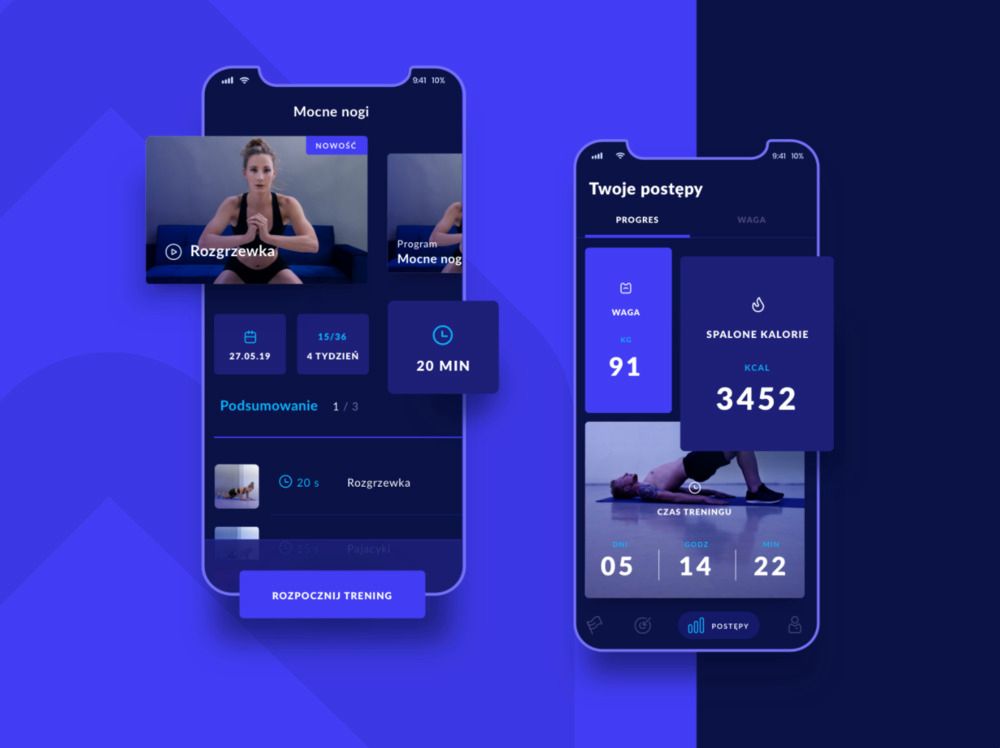
Trends in the fitness industry push business owners to rethink their traditional strategies (image by Kamila Figura)
Among other current trends in the fitness industry that make up our new reality is the reorganization of current studios to stay viable while reducing in-studio capacity.
You know it better than us: re-opened studios had to follow new rules of accepting 1 person per every 100 square feet versus a “1 per 60” ratio of the pre-COVID times and allowing to use only every other or even every third machine at a time.
Thus, owners have to try to fill their studios as full as possible throughout the whole day to deal with the inability to accept all the members during the traditionally busiest hours.
So if we briefly sum up the new in-studio reality, it will look as follows:
- Many people are willing to return to their favorite gyms, fitness and yoga studios.
- At the same time, owners of fitness businesses face many restrictions that cut their revenue and increase expenses.
- It pushes them to take a fresh look at their studios in terms of taking the most out of their location and interior spaces.
Let’s find out how new technologies that are changing the fitness industry can help you adjust to these trends.
🤖 How to Streamline Your In-Studio Processes with Digital Technologies
It may seem that digital technologies aren’t that helpful when it comes to in-studio experience. Yet, they promote fitness industry transformation in this direction, too. There are a few ways how mobile apps and websites can get you more out of the current situation.
Fitness Studio Management System 📋
Сurrent trends in the fitness industry call for business owners to be more flexible when letting people return to studios. Now more than ever they have to balance between providing their members with services and complying with security restrictions.
One of the brightest examples of digital transformation in the fitness industry is the introduction of Club Management systems.
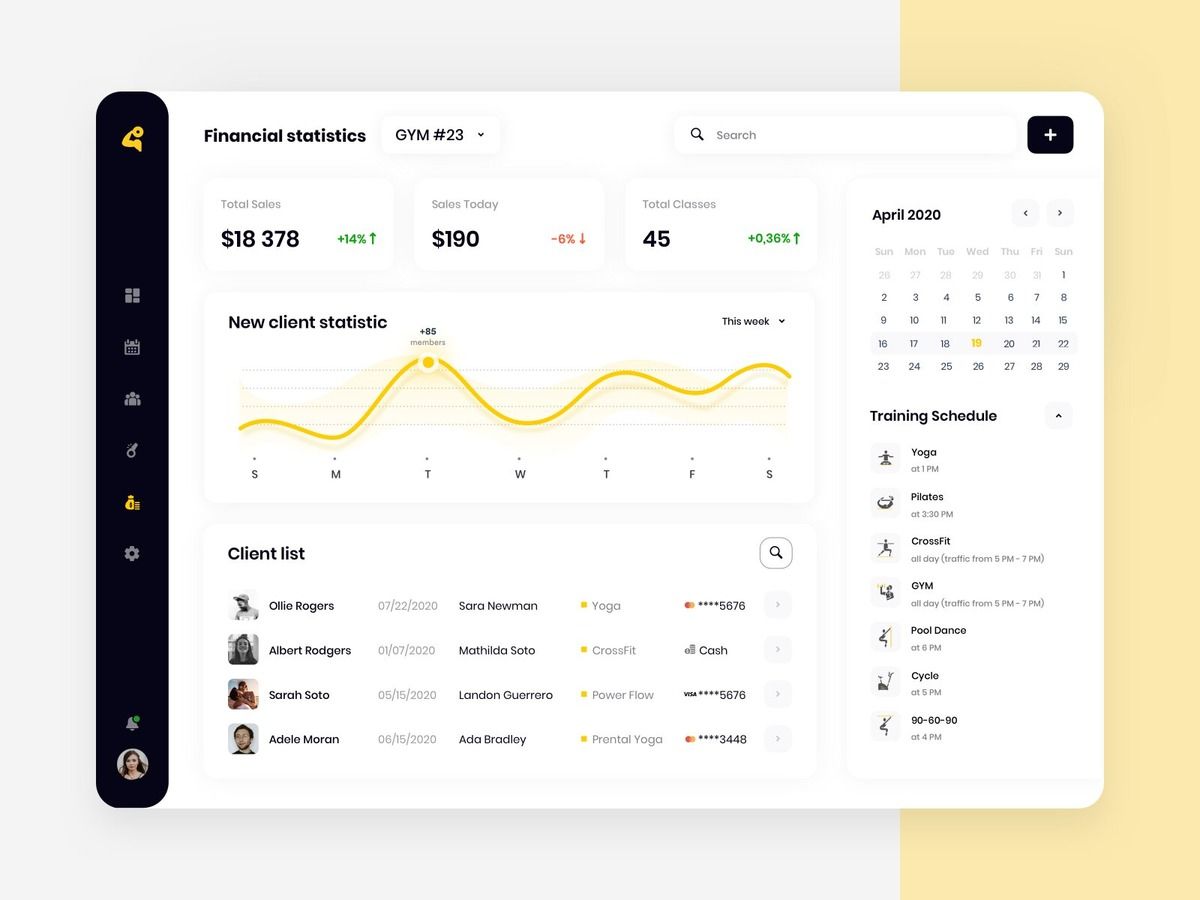
Dashboard of Fitness Studio CRM (image by Cleveroad)
Such tools weren't invented yesterday. Yet, they've changed their status. Earlier, it was mainly considered as a product that provides extra value to businesses. In the post-COVID times, Club Management systems can mean much more and help to rebuild trust with members and manage customer flows under new rules.
The key features of such systems are:
⚙️ Feature | 📄 Description | |
|---|---|---|
👥 Club Membership Management | See all member data in one place: attendance, account information, payment history, bookings, and contacts. | |
🦸♂️ Employee Oversight | Control employee schedules, access, skills. Distribute commission and assign daily tasks — which is especially relevant in the light of new cleaning requirements that are changing the fitness industry. | |
💸 Track Revenue, Expenses & Set Up Payments | Check all your revenue streams in one place. Moreover, it’s possible to use AI-powered algorithms to calculate your possible revenue based on the current performance. At the same time, you can get a more detailed breakdown of your expenses, including the new ones that occurred in the post-COVID times. | |
📊 Reports | Get access to comprehensive reports on different aspects of your business: which classes are the most popular; when the peak times in your studio are; what the portrait of your typical visitor is, etc. These insights will open up a way to make data-driven decisions to align with emerging trends in the fitness industry. | |
✅ Bookings Management | Finally, in this new reality fitness studio owners have to balance between two scenarios. On the one hand, they have to keep their studios as full as possible, otherwise, they just won’t be cost-effective. On the other hand, they should try to avoid situations when people won’t be able to enter the studio since there are no available places left. Thus, the booking feature will help to set and manage time, facility, coach, and class schedules so your members can book them via the website or mobile app. | |
One additional feature that can attract people to studios is the integration of workout equipment with a mobile app. You could develop a React Native gym app where your customers can track their workout performance. Still we’d like to pay special attention to the booking feature since it helps to adjust to trends affecting the fitness industry. Here’s how!
Online Booking 📲
An online booking system is the most obvious solution you can apply to control the number of people inside the studio while keeping the whole process user-friendly. It works especially good for scheduled classes:
- You set up a class for a specific time and date, limiting the number of participants according to the current restrictions. For example, you’ll hold a strength training on Monday with 7 participants instead of pre-COVID 15.
- Members can book a class using your branded website or mobile application.
- Thus, users will see in advance if there are any free places and won’t arrive at your gym just to find out that it’s already at the maximum capacity. At the same time, they’ll be able to check all the available classes, dates, and times to pick the ones that fit them the most.
You may also design a similar system to manage ordinary workouts. Yet, every person spends a different amount of time doing his or her exercise program. That's why you may come up with an alternative system to keep the number of visitors at the allowed level.
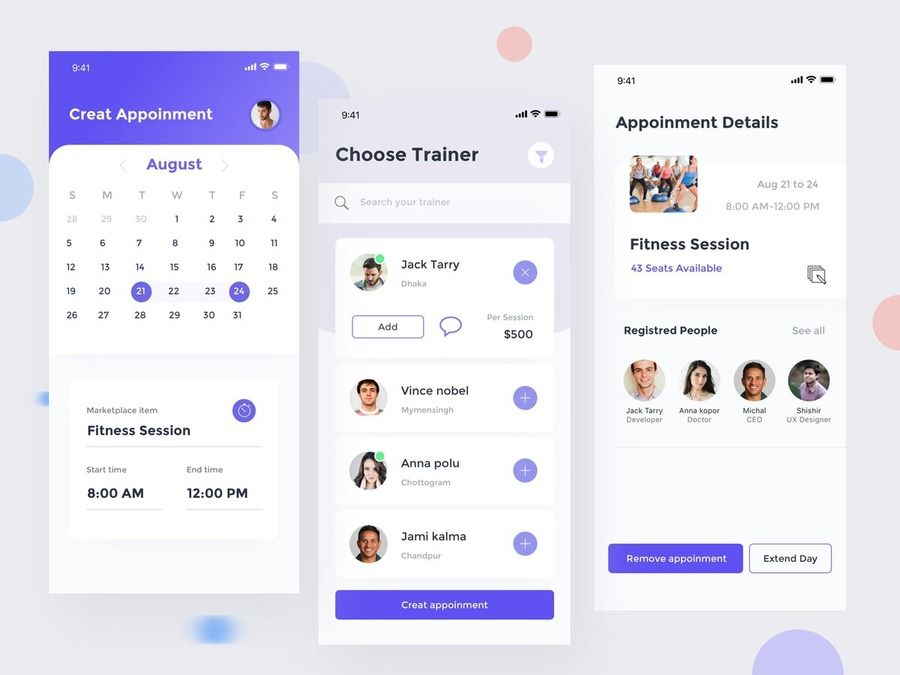
Booking system in a fitness application (image by Shahidul Islam Shishir ✪)
New technologies that are changing the fitness industry let you stay creative while looking for the best ways to incorporate them in your business model. For example, you may create such a system to manage the number of customers in your studio at a time:
- Calculate the maximum allowed number of visitors.
- Display the current number of visitors out of the maximum on your website or in a mobile app. For example, “Capacity: 10 out of 16”.
- As your admin check-ins a person who just arrived, he will also add 1 new visitor to these stats. Accordingly, when a person lefts, the admin will remove 1 visitor from the stats.
- The system may also calculate how much time every customer has already spent in your studio to provide a hint for others on how soon he may leave. It’ll be helpful in situations when your studio is full or almost full but encourage people to arrive since someone mat leave soon. For example, “Capacity: 14 out of 16. 3 more than 1 hour, 2 more than 1:30 hours”.
You may automate the system even more by adding a Digital Check-In feature.
Digital Check-In ✅
Digital Check-In isn’t a separate product but rather a feature that became highly relevant due to the latest changes in the fitness industry. We recommend checking this page to see how 24 Hour Fitness is adjusting to the new reality with their Workout Reservations and Digital Check-In features. It may actually be an experience you’d like to copy.
As you can see from the video, Digital Check-In is designed to limit to reduce human-to-human contact by automatically checking in upon arrival. It makes the whole process much faster and helps to avoid touching any high-contact surfaces.
You may also integrate it with your booking system. Upon checking in, the system will update the number of available places in the studio and run the clock to count how much time this particular user has spent in your studio.
💡 Takeaways
COVID-19 has given an extra boost to fitness industry trends that already were on the stage. First of all, we're talking about virtual content and digital tools like mobile applications or web CRMs and Studio Management Systems for fitness clubs. Making them a part of your overall business strategy turned from an additinal competitive advantage to almost a must-have under in the current situation.
At the same time, the Coronavirus pandemic started a few new growth trends in the fitness industry. They are mainly related to the way you do your fitness business offline — like the limited number of people you can accept or new safety guidelines. And, again, digital technologies can help you to adjust to this new reality with things like Digital Check-In or Online Bookings.
Do you need help with developing your Digital Strategy? Or you already have a concept of your mobile app or website and need an Estimate? Get in touch — and we'll see how we can apply our fitness app development company experience and expertise to help you!
Was it helpful?
Read also

Stormotion's ChatGPT Journey

Top 5 Best Practices for Integrating ChatGPT in Your App
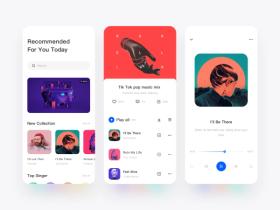
How to Build SaaS App Like Spotify
Our clients say
![Stormotion client Pietro Saccomani, Founder from [object Object]](/static/40e913b6c17071a400d1a1c693a17319/b0e74/pietro.png)
They make the whole business work for us, and their improvements are fundamental to our operations. They’re reliable, honest, and willing to try new things that will help us. We appreciate how flexible and easygoing they are.
Pietro Saccomani, Founder
MobiLoud
